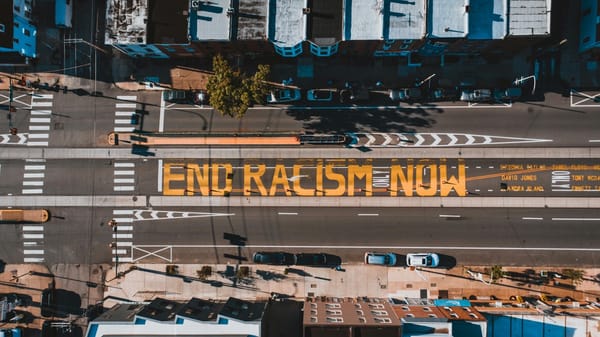Sacred Cyberspace: How Technology Has Advanced Spirituality in Black Communities
YouTube Tarot readings, Instagram astrology meme accounts and in more recent times, intuitive readings on Clubhouse, all showcase the digitisation of spirituality.

Access the Audio Read version of this article directly on Spotify for Podcasters.
“To some, technology represents a withdrawal from spirituality, however, technology is being used to bring the spiritual community together. The toll that racism and fighting for justice take on someone can compel individuals to digital spirituality, through virtual healing rooms and personal readings.“
In Black Transhuman Liberation Theology, published in 2019, author Philip Butler evokes “the construction of a practical approach to liberation for Black folks through the combination of technology and spirituality”.
In the book, Butler explains how this theology must engage current and emerging technologies to dismantle systems of oppression. That Black spirituality, Black biotechnology, and technological advancements coming together “may prove to be the perfect tool in the fight for liberation now, and well into the future.”
Liberation theology positions oppressive structures as sinful, and was coined by Roman catholicism in 20th century Latin America, to uplift the socio-economically disadvantaged, who suffer the most under these structures. Fast forward to 2021, when spirituality has seeped into everyday tech as a means of spreading knowledge, understanding one’s self, and connecting with others.
YouTube Tarot readings, Instagram astrology meme accounts, and in more recent times, intuitive readings on Clubhouse, all showcase the digitisation of spirituality. They have opened up ways of expressing spirituality to many, as well as providing channels for spiritual workers to do their jobs. When this hits the intersection of race, it’s easy for Butler's theory to come into play.
Spirituality and social justice have an intertwined history. The Black Church and Christianity played a huge role in the civil rights movement as a place to meet, organise and heal amongst the ongoing laborious conflicts. Black History Month was established in the UK in 1987, inspired by American historian and author Carter Godwin Woodson, who initiated the movement in North America. Woodson was a critic of the Christian Church, and as Black liberation movements progressed and decentralised, the church became less of a central refuge. Yet spirituality remains connected to the fight for freedom.
The Black Lives Matter movement was established in 2016, but it wasn’t until 2020, amongst worldwide lockdowns, that the fight gained large-scale momentum. During that time, a ritual was carried out by Dr Melina Abdullah, academic and co-founder of BLM L.A. In the ritual, Dr Adullah poured libations on the ground and chanted “Asé,” meaning “the power to make things happen", or “so let it be” in the West African language Yoruba. For many, Black liberation movements are spiritual in that they protect the sanctity of Black life in a system that doesn’t.
But where does Butler’s theory of liberation through the engagement of technology come in? Marginalised communities sometimes show an interest in spirituality due to the sense of power it provides in a society where they don't have much. The prevalence of Christianity amongst Black communities is a testament to this. To some, technology represents a withdrawal from spirituality, however, technology is being used to bring the spiritual community together. The toll that racism and fighting for justice take on someone can compel individuals to digital spirituality, through virtual healing rooms and personal readings.
New apparatus has always been used for spiritual purposes. New age spirituality, which gained traction as a counterculture in the 1960s and beyond, utilised all sorts of devices that can be considered pieces of technology. Astrological birth charts, which are mathematical visualisations of the position of the planets during a person’s time of birth, and the plethora of crystals used in spiritual rituals are examples of this. Biofeedback, a mind-body technique popular in new age practices, where a patient is connected to electrical sensors that help them to receive information about their body, is another example. In this way, it helps individuals manage pain through the power of their mind. Chromotherapy, also used by new age healers, uses colours to alter the body’s vibrations and frequencies for improved physical health. Technology has always been at the core of spirituality movements.
Today, spirituality apps are flourishing; Jiyo, launched by spiritual guru Deepak Chopra, presents tips and tasks as a means of expanding the reach of his teachings, while the Reiki Healing Affirmations app produces repetitive mantras. Spiritual Stories Daily is also an app that provides powerful testaments that demonstrate the positive potential of daily spiritual practices.
Butler refers to Black people as transhuman, that are flexible, adaptable, and transcendent, yet “grounded in materiality.” Technology hasn’t made us completely soulless. It is now fuelling our transhumanism, by providing us with new mechanisms to harness eternal inner power, and sharing it with humankind.





